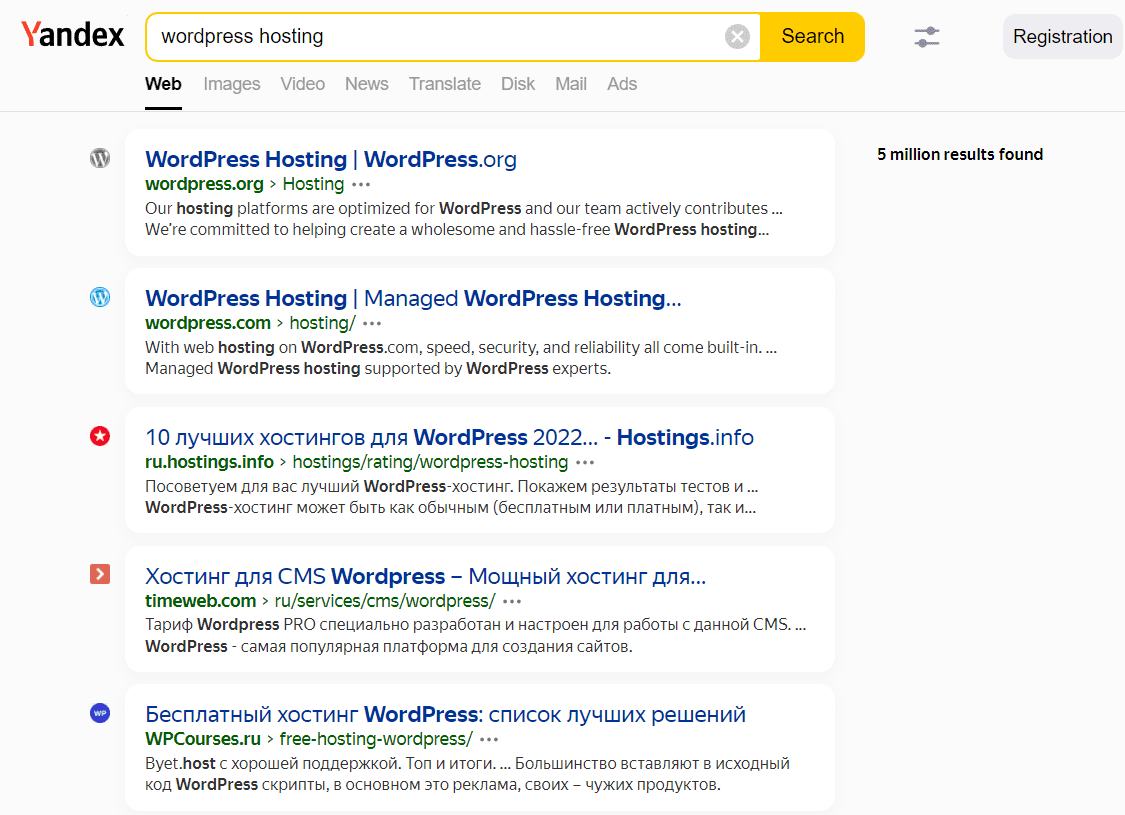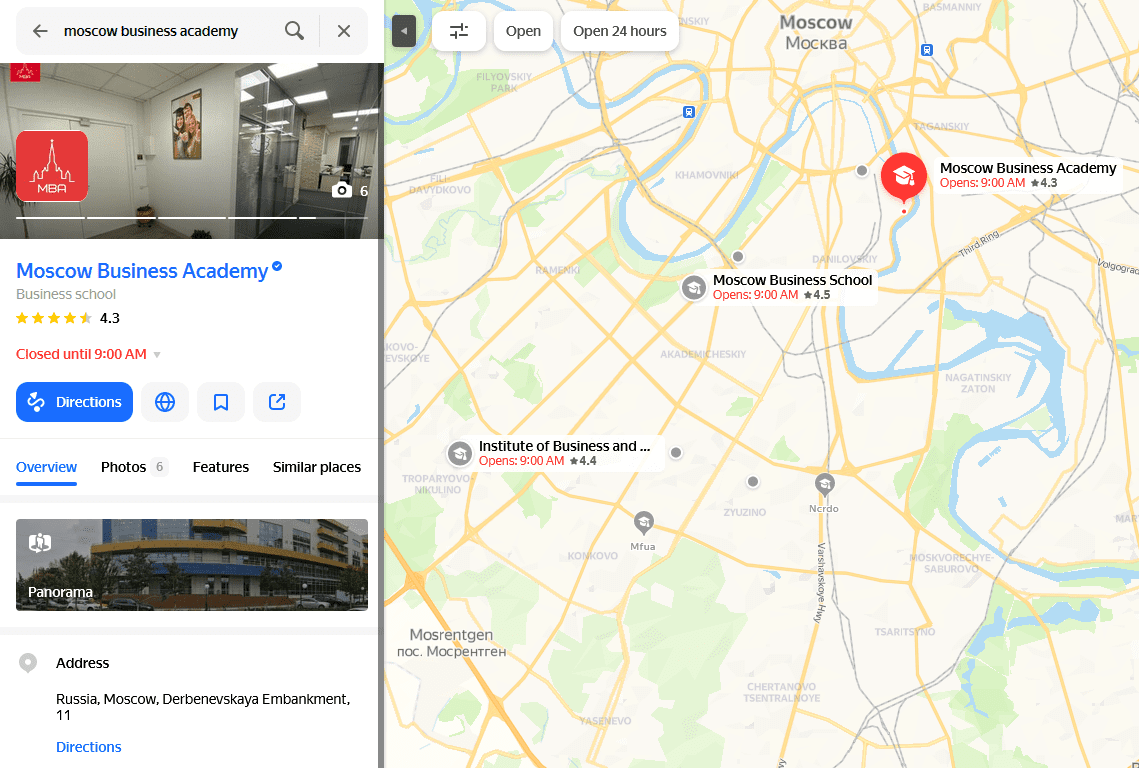A Simple Guide to Yandex SEO
Your default search engine can be different depending on where you live. Although Google dominates search around most of the globe, it has healthy competition in Russia from Yandex. If you want to target Russia and similar markets, you’d be wise to use Yandex Search Engine Optimization (SEO) techniques.
In this article, we’ll talk about Yandex and what makes it a unique case among search engines. We’ll also discuss how to optimize your website for Yandex SEO. Let’s get to it!
What Is Yandex Search?
Yandex is one of the most popular search engines in Russia and other markets, such as Ukraine, Belarus, Kazakhstan, Uzbekistan, and Turkey. It even approaches Google’s market share in those regions.d

In Russia, Yandex has a market share of 45.3 percent compared to Google’s 52.3 percent. One of the reasons Yandex is so popular is that it was designed with Russian language searches in mind. Other search engines sometimes struggle when parsing the language and understanding its nuances.
Yandex doubles as a portal. For many Russians, Yandex is their go-to news source. The platform also offers email, a maps service, multimedia storage, a browser, and a translation tool. Its roster of services is quite similar to Google’s, only that it’s geared toward Russian audiences.
It’s also worth noting that Russia is one of the only markets where Google isn’t the default search engine for Android users. Android is the prevalent mobile Operating System (OS) in Russia. When you launch Chrome in Russia, the browser will prompt you to choose between Yandex, Google, and Mail.ru.
How Is Yandex SEO Different?
Arguably, the most significant difference with Yandex SEO is its focus on Russian audiences. Even if you use Yandex from a different region, most of the top results will be Russian websites.

In the example above, you’ll also notice a couple of English results. Although Yandex is primarily a Russian search engine, it has a worldwide market share of around 1.28 percent. That puts it well ahead of DuckDuckGo and Ecosia, but still behind Yahoo!, Bing, and, of course, Google.
Even so, 1.28 percent of searches worldwide is not an insignificant number. Optimizing your website for Yandex SEO and, by association, for Russian audiences can bring a decent influx of additional traffic to your site. Yandex SEO is essential to market your website to Russian audiences. However, if you don’t want to target this country or other regions with Cyrillic alphabets, you might get better results focusing on different search engines.
Additionally, you can work on your multilingual and international SEO, so that your site is more accessible to users from the region.
5 Best Practices to Optimize Your Content for Yandex
Before talking about optimizing your content for Yandex, it’s essential to cover the basics. SEO best practices apply to most search engines, and Yandex isn’t the exception.
If you want your content to rank higher, you’ll need to offer value and a positive user experience. On top of that, you should consider utilizing on-page optimization techniques, such as using keywords appropriately, structuring pages correctly, and adding metadata.
If you have the SEO basics covered, ranking well on Yandex shouldn’t be a problem. However, there are also specific Yandex optimization techniques. Let’s discuss what those practices are!
1. Take Advantage of Yandex Webmaster Tools
Yandex Webmaster Tools is the equivalent of Search Console or Bing Webmaster Tools for this search engine.

Just like those platforms, Yandex Webmaster Tools offers a variety of features to optimize your website, including:
- Submitting your website’s sitemap. By submitting a sitemap, you tell the Yandex crawler which pages you want to index.
- Enabling geographic targeting. If you have a website that targets a local audience, you can tell Yandex where that audience is located. That way, the search engine will know which user base to show those pages to.
- URL monitoring. You can use Yandex to monitor specific URLs within your website. This feature shows the current page status, last indexing date, and other relevant information.
- Finding eligibility for special elements. The Yandex Search Engine Results Pages (SERPs) often include unique elements such as rich snippets. Unlike other search engines, Yandex tells you if your content is eligible for particular SERP features.
Remember that nothing stops you from using multiple webmaster tools from different search engines. Yandex Webmaster Tools simply offers various features geared toward that specific search engine.
Using multiple sets of webmaster tools can increase rankings across the board. That means you’re never solely dependent on Google or any other search engine for all your traffic.
2. Consider Displaying Turbo Pages
Yandex Turbo Pages are the equivalent of Google Accelerated Mobile Pages (AMP). They’re lightweight, stripped-down versions of pages designed to load as fast as possible on mobile devices. Yandex also caches Turbo Pages on its servers to decrease loading times further.

It’s important to note that using Turbo Pages is not a ranking factor. However, the pages offer the following advantages that can improve the user experience:
- Yandex caches Turbo Pages – This means your content is always available even if your website goes down temporarily.
- Lower loading times – Higher loading times often correlate with an increased bounce rate.
Turbo Pages are optimized for mobile users, meaning that adopting the framework won’t affect your site’s desktop experience. However, it’s worth noting that there is some controversy with Turbo Pages. They don’t give you complete control over how your website looks and behaves, which can be problematic.
3. Prioritize Backlink Quality Over Numbers
Perhaps the most significant difference between Yandex and Google is how the search engines approach backlinks. With most search engines, many external URLs pointing to your website correlate to higher rankings. However, Yandex doesn’t prioritize backlinks as much as Google.
With Yandex, we recommend focusing on obtaining high-quality backlinks from sites within your niche. The search engine treats backlinks from unrelated websites as red flags. Likewise, external URLs that don’t send traffic to your site can also raise the alarm with the Yandex algorithm.
Ultimately, you might not need to worry about backlinks unless you engage in black hat SEO practices such as buying links. And we don’t endorse doing so. However, we recommend using Yandex Webmaster Tools to see which sites link to yours. That way, you can figure out which URLs you need to disavow (if any).
4. Consider Buying an Older Domain
Yandex SEO treats domain age as a critical ranking factor. The logic is that older domains are more trustworthy since the websites have been around for longer.
In practice, this means that new websites are less likely to rank among the first results in the SERPs. However, that principle holds true for basically every search engine in the world.
The big difference with Yandex is that you can somewhat boost your rankings from the get-go by buying an older domain for a new website. This technique falls somewhere in the grey hat SEO spectrum, and it’s only recommended for new projects.
It makes little sense to change an established domain name for existing websites. Any benefits you see in Yandex SEO will be offset by the difficulties of changing your site’s name.
5. Submit Your Business to the Yandex Directory
Yandex Business Directory is the equivalent of Bing Places for Business and Google My Business. You can submit your company to the directory so that it shows up in relevant Yandex searches and its map.

Unlike other search engines, Yandex doesn’t display business cards within its SERPs. However, you can find all the same information as Google business cards. That includes location data, reviews, operating hours, pictures, directions, and more:

Submitting a website to the Yandex Business Directory is a simple but relatively lengthy process. You’ll need to verify the listing before Yandex publishes the information, which can take a while.
Conclusion
Yandex is incredibly popular in specific regions, such as Russia, Belarus, Kazakhstan, Tajikistan, and a handful of other countries. If you live in a country that uses the Cyrillic alphabet, Yandex is probably among the most popular search engines. Even for those countries that don’t, it still has a sizeable share of the market and is well worth your time in optimizing for.
Following best SEO practices will get you far in the Yandex SERPs. However, you should also consider the following tips:
- Take advantage of Yandex Webmaster Tools.
- Consider displaying Turbo Pages.
- Prioritize backlink quality over numbers.
- Consider buying an older domain.
- Submit your business to the Yandex Business Directory.
Do you have any questions about Yandex SEO? Let’s talk about them in the comments section below!
Featured image via Overearth / shutterstock.com
The post A Simple Guide to Yandex SEO appeared first on Elegant Themes Blog.
The Tech Zone
Comments
Post a Comment